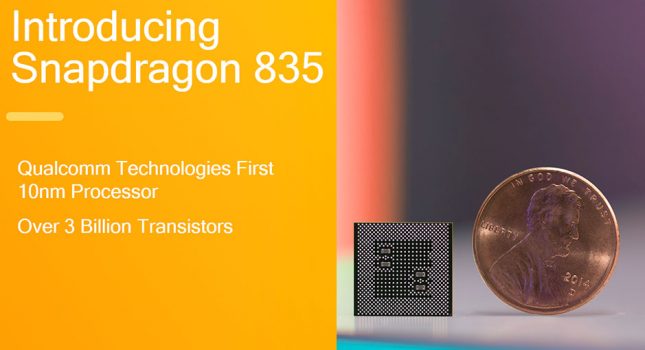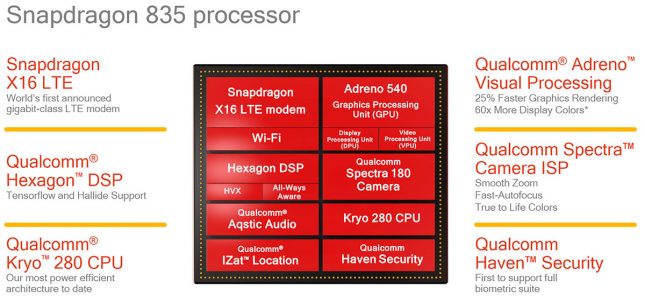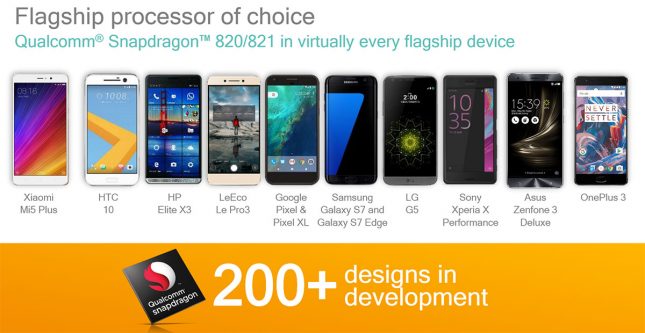Pay Attention To the Qualcomm Snapdragon 835 Processor
Have you seen the demo video of a Qualcomm Snapdragon Processor with x86 Win32 support running applications like Adobe PhotoShop, Microsoft Office and actual game titles like World of Tanks Blitz all smoothly Windows 10? Truly a sight to behold and this could be a game changer for the industry.
That demo was done on a the ‘old’ Snapdragon 820 and the Microsoft Windows / Qualcomm Snapdragon partnership laid the ground work for upcoming devices known as always-connected cellular PCs. Rumor has it that a number of big name companies that are testing laptop and tablet designs powered by Qualcomm Snapdragon processors, running Windows 10.
Yesterday at CES 2017 Qualcomm announced the new Snapdragon 835 mobile processor and it is the first processor to be manufactured commercially on the 10nm FinFET process. Think about that for a second. Qualcomm is the first to us the 10nm FinFET manufacturing process on a processor. They beat Intel to 10nm with a processor that is fully compatible with Windows 10 thanks to the inclusion of Microsoft UWP (Universal Windows Platform) that allows UWP apps to run run natively and legacy x86 (32-bit) Win32 apps to run with software emulation.
The Snapdragon 835 features a Kryo 280 CPU with four performance cores running at up to 2.45 GHz and four efficiency cores running up to 1.9GHz. The Snapdragon has 2MB of L2 cache and is 25 percent better 3-D graphics, 25 percent less power, and is 35% smaller than its predecessor, the Snapdragon 820. That basically means it is powerful enough to power smartphones, tablets and maybe even low-power gaming laptops. The Snapdragon 835 features the Adreno 540 GPU that has support for OpenGL ES 3.2, full OpenCL 2.0, Vulkan and DX12.
With support for DirectX 12 could that mean we’ll see one of these processors in a device with discrete graphics from NVIDIA or AMD? Now that traditional Windows applications can run seamlessly on both ARM and x86 processors it means that Intel now has real threat. To be fair Intel has quit making its Atom smartphone chip to focus on modems and is set to deliver their first 5G modem for testing in the second half this year that could possibly reach speeds over 5Gbps. 5G is the successor to 4G in today’s mobile devices, but don’t get too excited as the first 5G networks are expected to be deployed starting in 2020.
Speaking about modems, the Qualcomm Snapdragon 835 supports Gigabit LTE. Yes, Gigabit-class thanks the Snapdragon X16 LTE modem with support for Category 16 LTE download speeds of up to one gigabit per-second (3x20MHz CA, 256-QAM), and Category 13 LTE upload speeds up to 150 megabits per-second (2x20MHz CA, 64-QAM). That means the next generation mobile devices will likely have the ability to have faster internet connectivity than what is cable on most home 802.11ac Wi-Fi networks can deliver with local Internet Service Providers (ISPs).
The Qualcomm Snapdragon 835 looks and sounds impressive and with the Qualcomm Snapdragon 820 being in so many devices it looks like the Snapdragon 835 is a worthy successor and will likely be used in even more designs. Qualcomm has stated that the Snapdragon 835 processor is now in production and will be shipped in commercial devices the first half of 2017. We can’t wait to see how they perform and what new devices will be brought to market with it! Bring on those always-connected cellular PCs.



